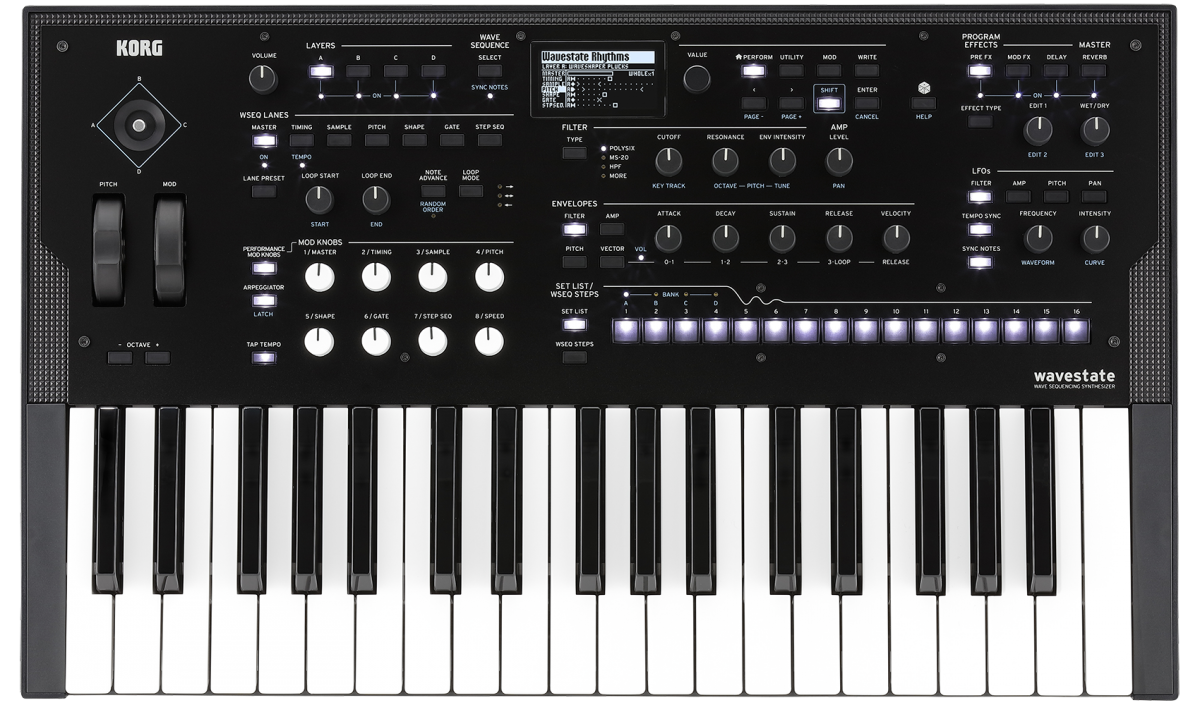

One of the joys of Korg’s new range of synths in this format is the extent to which they’ve exploded the capabilities onto physical controls.

Each can also be independently modulated via Modwave’s generous selection of modulators. Each lane can also operate independently, playing back at a different speed or direction, looping at a different point. These can relate to musical parameters, such as pitch, or with parameter movement instead. The same goes for Motion Sequencing, where you can separate several key musical parameters into specific lanes.

The ‘ball’ that indicates the current position of an evolving sound can either bounce off virtual walls, be accelerated by them, or drift through one wall to reappear on the other side.Īll of this automation translates to parameter movement, so the sonic potential here is enormous. You can create a virtual ‘ramp’ in the middle of the pad so that movement slows down and speeds up as it approaches and then moves away. However, it’s also possible to introduce automated movement whose behaviour can be incredibly sophisticated. The Kaoss Physics X-Y pad lets you move between the parameters mapped to the two axes. The potential of Modwave’s sound engine is enormous and is fueled by the unpredictability of using wavetables as the source material for sonic experimentation.Īmong Modwave’s modulation sources, Kaoss Physics and Motion Sequencing 2.0 modules are by far the most exciting. Oscillator 2 introduces clanging, distorted overtones via rotary dials, with randomly shaped LFOs determining how those overtones evolve, shift and morph over time. Modwave provides a raft of options in this regard.įor instance, imagine a soft, relatively calm pad sound generated by two waveforms in Oscillator 1. The potency of any wavetable synth is determined by the number of ways you can morph between waveforms in a wavetable. But alongside these controllers, there are plenty of modulation sources, with four envelopes, five LFOs, key-tracking generators and more. These let you start exploring the myriad ways in which wavetables, filters and effects parameters (to name only three targets) can be moved and changed in real-time. The summed, mixed and filtered sound then hits the Modulation Matrix, and the fun really starts.įour freely assignable red ‘Mod’ dials get the modulation ball rolling. Korg is justly famous for its biting, aggressive filters, and Modwave’s options don’t disappoint.

The sum of these sound sources then passes into Modwave’s mixer before travelling into a filter stage, which offers Polysix and MS-20 high and low-pass emulations, alongside many more digital alternatives. And you aren’t limited to a single wavetable per sound as four can play concurrently, in two lots of two within oscillators 1 and 2, alongside an additional sub/noise oscillator. You can even add more wavetables of your own in Serum and WaveEdit formats.


 0 kommentar(er)
0 kommentar(er)
